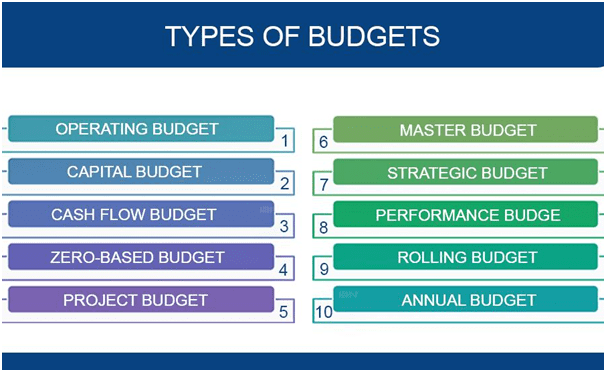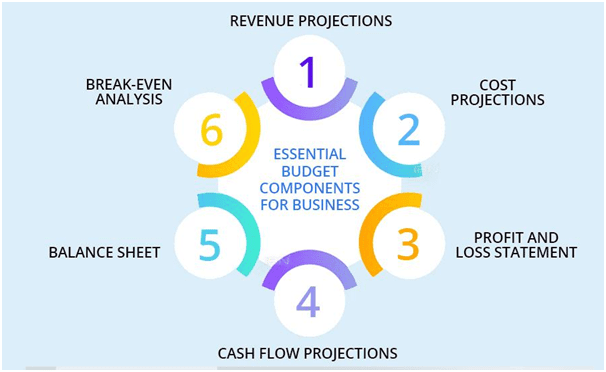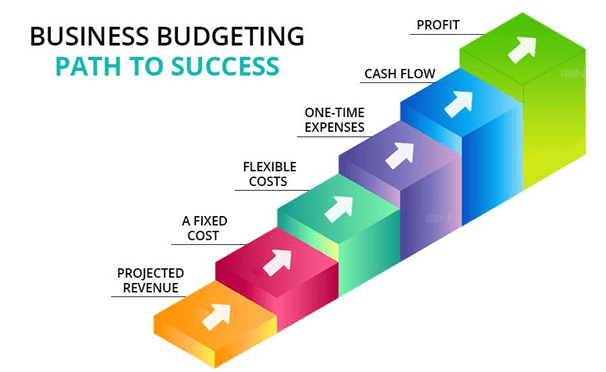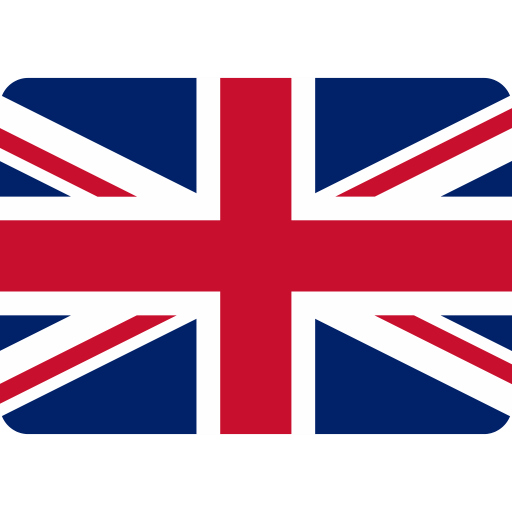Effective business budgeting is critical for any organization’s success. As per the CBInsights report, running out of cash (23%) was the third most common factor in causing business failure. Cash flow management is essential to avoid this. A well-planned budget ensures the efficient and effective use of resources to achieve your business goals. By allocating funds strategically, a business can improve operations, increase profits, and achieve long-term stability. This blog will find tips and best practices for managing a business budget and maximizing profits.
Table of Contents
- What does “business budgeting” mean?
- Different Types of Budgets
- Key Components for Creating a Business Budget?
- Budgeting for your business: A Pathway to Success
- Why IBN Tech is Ideal: Cash Flow Management and Cutting-Edge Technology
- Conclusion
- FAQs
What does “business budgeting” mean?
Budgeting is creating a financial document to estimate income and expenses for a period to ensure resources for goals. A basic budget is projected income minus costs for a period, with leftovers for projects. Budgets can be compared to actual performance to see how accurate predictions were.
For example, imagine a school has budgeted $200,000 for a new sports facility. Due to unexpected construction costs, the project ends up costing $220,000. To compensate for overspending, the school must redirect funds from other areas such as music or art programs.
“How did we go over budget?” you inquire about the project’s analysis. Is there a problem with inefficiency or misallocation here? When you create the budget for the following year, you use those insights to tighten the procedure and limit the project’s spending to $20 million or distribute funds to other projects.
Different Types of Budgets
A business’s budget serves as a picture of its financial standing. It contains crucial information on the present economic situation, such as revenue and expenses, as well as future goals. It should be one of the first steps in operating a business because it is a vital tool for making wise financial decisions.

Key Components for Creating a Business Budget?
Typically, including a risk assessment in a business budget is beneficial as it enables the business to identify potential financial risks and develop strategies to minimize them.

1.Revenue projections:
An estimate of the income the company will earn over a specific time period.
2.Cost projections:
Prediction of all costs associated with running a business.
3.Profit and loss statement:
A summary of revenue, expenses, and profits over a specific time period.
4.Cash flow projections:
An estimate of incoming and outgoing cash over a specific time period.
5.Balance sheet:
A snapshot of the business’s financial health at a specific time, including assets, liabilities, and equity.
6.Break-even analysis:
The point at which revenue and expenses equal one another, indicating that the business is losing money.
Budgeting for your business: A Pathway to Success
Money makes the world go round, and the aspect of the financial plan is the steering wheel that guides it in the right direction. It is like navigating through the financial landscape with the help of a well-crafted financial plan. Let’s dive into our financial freedom journey by looking at the various components of a comprehensive financial plan!

Projected revenue: –
This refers to the expected income for your business generated from the sale of goods and services. It consists of two main elements: a sales forecast and an estimated cost of goods sold, or services provided. If your business has been operating for more than a year, you can use your experience to guide your estimates. If your business is new, you can research the revenue of similar local companies as a reference for creating realistic projected revenue figures. It is essential to maintain a realistic approach, to avoid overestimation.
A fixed cost:
It is a regular expense that a business incurs without variation. Examples include rent, mortgage payments, employee salaries, internet service, accounting services, and insurance premiums. These expenses should be included in the budget to ensure sufficient funds are set aside for them and can be used as a reference point when assessing financial performance.
Flexible costs:
The expenses that fluctuate with the level of business activity. They include the costs of goods or services that vary depending on production or sales levels, such as raw materials, distribution, and labor for manufacturing. As production increases, for example, the costs for these items rise, and they are classified as variable expenses.
One-time expenses:
Unexpected and infrequent costs that a company may incur. Examples include buying replacement equipment or furniture or making a large purchase such as a laptop. These expenses are difficult to predict, so it’s a good idea to save some money for them.
Cash flow:
A business’s cash intake and outflow. It can be determined by looking at past financial records and using that information to project earnings for the current year. It’s important to pay attention not only to the amount of money coming in but also to the timing of that income. Knowing when cash flow is highest, such as during peak seasons, can aid in planning for large purchases or investments.
Profit:
The final element of a budget and is calculated by subtracting estimated costs from revenue. A higher profit indicates growth in the business. By projecting the expected profit for a year, a business can make informed decisions on allocating the funds, such as investing in advertising or marketing to increase sales.
Why IBN Tech is Ideal: Cash Flow Management and Cutting-Edge Technology
IBN Tech brings together the expertise of knowledgeable accounting professionals and specialized technology solutions for the best possible results. IBN Tech’s experienced team of accountants will provide the necessary guidance and support your business needs to maintain accurate records and improve financial processes. Additionally, it provides cost-efficient and user-friendly technology solutions to help streamline bookkeeping processes and ensure accuracy and efficiency.
Conclusion
Creating a budget for a business requires careful consideration of all aspects of the company’s financial situation, including the importance of cash flow management, and a budget template which can be a valuable starting point for this process. Businesses can improve their financial stability and position themselves for success in the future by taking the time to create a comprehensive budget.
FAQs
- Q.1. How crucial is budgeting for small businesses?
- Budgeting is essential for running a successful small business. Without a budget, it can be difficult to keep track of expenses and income, as well as plan for future growth. It also helps business owners identify areas that may need more investment and areas where they can save money. Having a good budget in place can help small business owners make informed decisions and ensure their businesses stay on the right track.
- Q.2. What are the most important elements of budgeting for my business?
- The most important elements of budgeting for your business include setting financial goals, ensuring adequate cash flow, understanding your expenses, monitoring your budget, and staying up to date on financial trends. Having a detailed budget plan in place can help you make informed decisions, anticipate risks, and stay on track toward achieving your financial goals.
- Q.3. What tools can be used to help create a budget for a business?
- Creating a budget for a business requires several tools and resources, such as revenue and cost projections, a profit and loss statement, cash flow projections, a balance sheet, and a break-even analysis. Each of these components can be used to better understand the business’s financial health and help create a more accurate budget.



